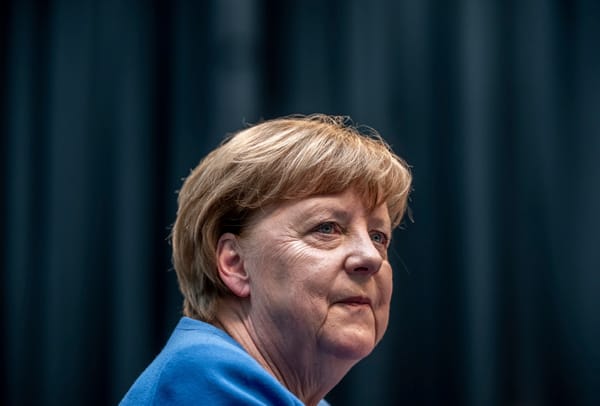Freedom: Memoirs 1954—2021
by Angela Merkel
St. Martin’s Press, 720 pages, $40
On a calm, cool September afternoon in 1939, an actual nightmare took solid form on the streets of the handsome town of Brest-Litovsk. I could say that Brest-Litovsk was in Poland, as it had been until that day. But it would not really be true. The town lies in those strange badlands where (if you are not murdered or deported by the latest invader) you may visit several countries in a lifetime without ever leaving home. In its time it has been part of Russia, Lithuania, Poland, and the Soviet Union, and now it is owned by Belarus. I recommend a visit. You may stay in the Hotel Bug, called after the local river. You may inspect its imposing shell-smashed, glaring red brick fortress, the colour of dried blood, scene of wicked diplomacy and of almost unbelievably violent warfare. This Russian-built stronghold is one of the most alarming chunks of solid history to be found on the surface of our planet. Once the twin powers of Germany and Russia met here, like two great icebergs grinding and clashing. Now, only Russia is left.
On that particular day in 1940, Brest was comparatively peaceful, if menacing. Together on a wooden platform, the famous German general and tank warfare genius Heinz Guderian stood smiling in his Nazi greatcoat. Next to him was the Soviet Red Army’s Brigade Commander Semyon Krivoshein, a Russian-Jewish veteran of the Spanish Civil War, grinning in his Bolshevik leather coat. A German Swastika flag flapped above them both (as the Germans had in fact got there first). Together they watched a joint victory parade of Hitler’s and Stalin’s armies, shaking hands over the corpse of Poland. After the parade had goose-stepped and trundled by, there was a joint Nazi-Soviet banquet. This was as cordial as the Kremlin feast just a month before, at which Josef Stalin had drunk a toast to the Nazi Führer, watched by a beaming Joachim von Ribbentrop, Hitler’s foreign minister. The wicked pact they had signed that night in Moscow now took solid form in Brest-Litovsk. Toasts to the health of Hitler and Stalin were loudly sung, and soldiers from both sides fraternized, smoked cigarettes, and drank beer. The Nazi propaganda machine (though not Stalin’s) took photographs. In the uncertain 1990s between the end of the First Cold War (1991) and the beginning of the Second Cold War (sometime around 2007), the Polish embassy on Berlin’s Unter den Linden displayed these pictures, hugely enlarged and with a biting commentary, in its front window. They are not there now that Poland has been generously integrated into the EU and NATO sphere, and old antagonisms towards Germany and Austria-Hungary have been stowed away in the cupboard of the yesterdays, with so much other embarrassing historical bric-a-brac.
As before, few have even heard the name of Brest-Litovsk, though in many ways it is the pivot of the entire 20th century. In the same town, in 1918, momentous treaties were signed between Lenin and the Kaiser’s Germany. They recreated Ukraine as a nation state for the first time in many centuries, presaging the war now raging there, and they pushed Russia’s western frontiers about as far back as they were to be pushed when the Soviet Union fell apart in 1991.
